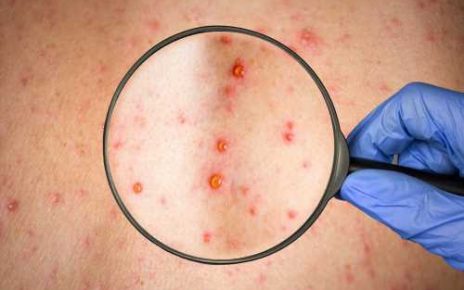
Does the timing of prenatal exposure to corticosteroids and β2-agonists impact a child's neurodevelopment by age 3?
In a recent study published in JAMA Network Open, researchers investigated the association between the timing of in-utero exposure to β2-agonists and corticosteroids and offspring neurodevelopmental milestones during the initial three years of life.

Background
Asthma is one of the foremost obstructive pulmonary diseases encountered during pregnancy, and patients may require medical interventions to reduce complications, which would otherwise increase the risk of adverse maternal and fetal outcomes, including preterm birth, low weight at birth, congenital malformations, pre-eclampsia, and perinatal death.
Thus, asthma in pregnant mothers could influence maternal and fetal health. β2-agonists and corticosteroid inhalations are prescribed to pregnant women with asthma. However, the impact of their exposure in-utero on offspring neurodevelopment is unclear, warranting further research.
About the study
In the present study, researchers investigated whether the timing of β2-adrenergic agonist and corticosteroid exposure during pregnancy could impact neurodevelopmental outcomes in the offspring over three years.
The team analyzed data obtained from Japan Environment and Children’s Study (JECS) participants across 15 centers in Japan. Mother-offspring dyads were recruited from 1 January 2011 to 31 March 2014, and data analysis was performed from January to February 2023. The study exposures were β2- agonists and corticosteroids administered during early pregnancy (week 0 to week 12) and middle-late pregnancy (after week 12).
The outcome measures were neurodevelopmental milestones in the offspring (fine motor, gross motor, personal-social, communication, and problem-solving skills) evaluated based on the Japanese Ages and Stages Questionnaire, third edition (J-ASQ-3) data obtained at six months, 12 months, 18 months, 24 months, 30 months, and three years. A sensitivity analysis was performed using the predetermined mean below two standard deviations as J-ASQ-3 domain cut-offs.
Potential confounders included maternal age during delivery, level of education, marital status, pre-pregnancy asthma history, and alcohol intake during pregnancy; paternal and maternal smoking during pregnancy; household income; and the gender of the offspring. Additional covariates included maternal body mass index (BMI) before pregnancy, infertility treatments, mental distress during pregnancy, diabetes during pregnancy, concomitant medications (such as folic acid and iron supplements and antibiotics) and offspring gestational age, weight at birth, duration of breastfeeding, and nursery attendance.
Data on the study exposures were obtained using two offline interviews conducted in the prenatal period by research coordinators of the regional centers. The comparator group included offspring whose mothers did not consume anti-asthmatic medications throughout pregnancy. Multivariate logistic regression modeling using generalized estimating equations (GEEs) was performed for analysis.
Results
Initially, 103,060 pregnancies were enrolled, and 104,062 fetuses were registered, of which 3,779 fetuses were excluded due to missing data on miscarriages, stillbirths, and live births. From the remaining 100,303 live births, the team further excluded 8,843 births [including preterm births (before week 37.0), multiple fetuses, missing data on anti-asthmatic medication exposure at enrollment and during mid-to-late pregnancy, and post-term births (after week 41), and missing data on offspring gender, and indeterminant offspring gender].
As a result, 91,460 maternal-fetal dyads were considered for analysis. The mean maternal age was 31 years; 4.5% of mothers smoked, 2.8% drank alcohol during pregnancy, and 11% had a prior asthma history. Forty-nine percent (n=44,864) were female and 51% (n=46,596) were male. The age at gestation for most (66%) fetuses was between 39 and 41 weeks.
Over 65% of offspring were breastfed in the initial year of life. Among the fetuses, 401 fetuses, 935 fetuses, and 568 fetuses received corticosteroid exposure in the initial, middle-late, and both pregnancy stages, respectively. β2-agonist exposure was reported for 170 (0.2%) fetuses during initial pregnancy, 394 (0.4%) during middle-late pregnancy, and 184 (0.2%) fetuses during both stages.
The team found no associations between corticosteroid exposure and offspring neurodevelopment during the two pregnancy stages. Likewise, no associations between β2-agonist medications during the initial pregnancy period and neurodevelopmental outcomes in the offspring were reported. However, β2-agonist exposure in the middle-late pregnancy period was linked to delayed development of the personal-social skillset, with an odds ratio of 1.5. Sensitivity analysis yielded similar findings, indicating the robustness of the primary results.
Implications
Overall, the study findings showed no associations between exposure to β2-agonists and corticosteroids in-utero and fetal neurodevelopment, irrespective of exposure timing, in line with previous studies. The findings indicate that pregnant asthma patients can safely consume β2-agonists and corticosteroids and do not affect neurodevelopmental outcomes in the offspring. In addition, the findings could inform choices concerning maternal asthma management during pregnancy.
However, further research, including population-based studies, larger sample sizes, evaluating the associations of anti-asthmatic medications with fetal development, considering maternal asthma severity at pregnancy, medication dosage, duration, and administration route, must be conducted to improve the generalizability of the findings.
- Abir Nagata, Ph.D.; Toshio Masumoto, Ph.D.; Hidekazu Nishigori, MD, Ph.D.; Takatoshi Nakagawa, Ph.D.; Shinji Otani, MD, Ph.D.; Youichi Kurozawa, PhD; Neurodevelopmental Outcomes Among Offspring Exposed to Corticosteroid and B2-Adrenergic Agonists In Utero, JAMA Network Open. 2023;6(10):e2339347. doi:10.1001/jamanetworkopen.2023.39347 https://jamanetwork.com/journals/jamanetworkopen/fullarticle/2810992
Posted in: Child Health News | Medical Science News | Medical Research News | Women's Health News
Tags: Agonist, Alcohol, Asthma, Body Mass Index, Breastfeeding, Children, Corticosteroid, Diabetes, Eclampsia, Education, Folic Acid, In Utero, Infertility, Maternal Smoking, Pre-eclampsia, Pregnancy, Prenatal, Research, Smoking, Supplements

Written by
Pooja Toshniwal Paharia
Dr. based clinical-radiological diagnosis and management of oral lesions and conditions and associated maxillofacial disorders.


